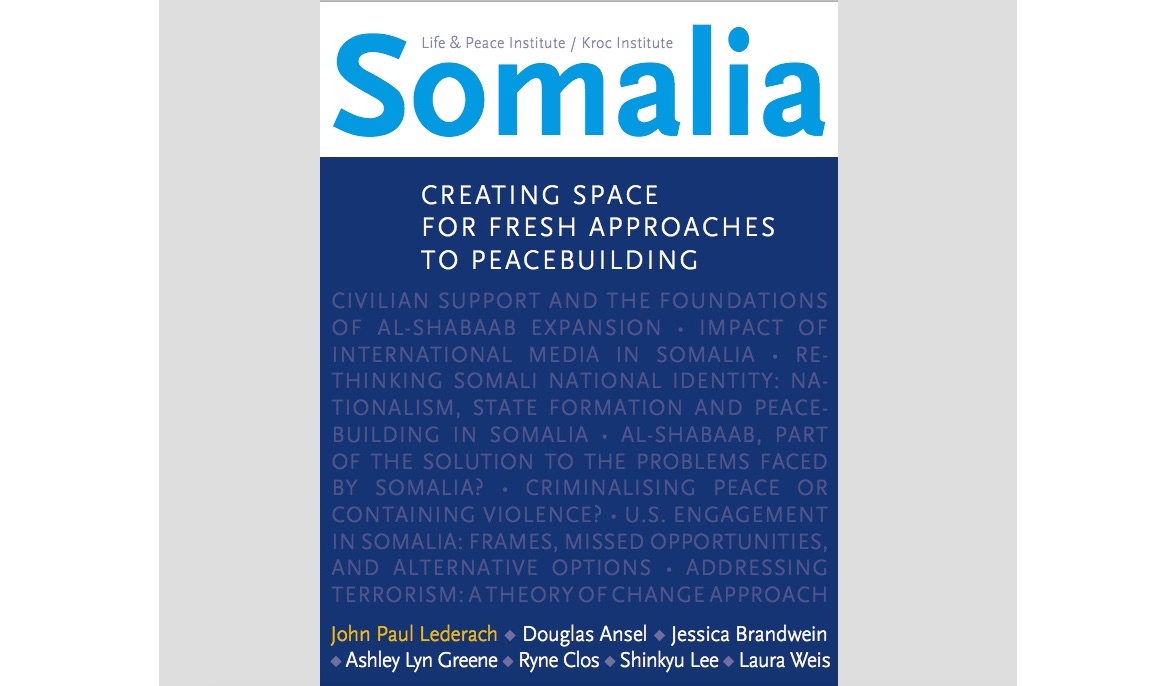TOLERANCE AND SOLIDARITY .
Excerpts from an essay by Paul Lederach in Somalia: Creating space for fresh approaches to peace building
Introduction
The recent “Holder vs. Humanitarian Law Project” U.S. Supreme Court decision of June 21, 2010 has sharpened the debate about engagement with blacklisted groups and has directly impacted the wider communities where designated foreign terrorist groups operate. Anti-terror legislation has consequences and relevance for peacebuilding organizations . . .

click on image to enlarge
since 9/11 and even more with the “Holder vs Humanitarian Law Project” decision we have witnessed a divide emerging between two competing theories of change. The designated foreign terrorists list proposes a change strategy based on isolation. Peacebuilding proposes a strategy of engagement. . .
Conclusion
. . . I would make the case that isolation in the form of wide ranging terrorist lists was driven by desire to control future acts of terrorism. But the approach has little, if any, clear projections of a theory of change that addresses the complexity around the different contexts where it has been applied. It seeks to control violence in the short term but does not suggest how as strategy it contributes to desired change in the mid to long-term. Engagement as an approach includes concrete ideas about change over the mid and longer-term but does not have within its purview specific strategies aimed at controlling or preventing a particular act of terrorism in the short-term. Its purpose is not policing. Engagement strategies seek to change the conditions from which violence emerges, to locate and create the opportunities that make that change possible.
Policy recommendations
• Delineate with greater specificity the theory of change that supports terrorist listings with a particular focus on how it will meaningfully and strategically engage the affected populations. The assessment of the basic theory requires a careful compilation of evidence that assesses, in particular, whether it has increased or decreased a capacity to recruit, solidified or weakened more extremist leadership, and provided for shifts in the wider population toward nonviolent strategies of social change.
• Develop a clear end-game scenario for how geographies most affected or controlled by designated organizations will shift the justifying narratives and behavior from violence (and the use of terrorism in particular) toward nonviolent processes. This requires a specific strategy for how isolation contributes to constructive shifts in the wider civil society most affected by the terrorist listings.
• Based on what now appears to be compelling evidence, pinpoint how isolation of leaders (similar for example to policing approaches for criminal behavior) combines with robust engagement of local populations.
• Develop strategies that constructively impact the rise of second tier and secondary leadership. Given that many of these movements rely heavily on youth, a strategy that strategically approaches the growth of new and alternative leadership requires significant and varied approaches to engagement. Isolation as a blanket policy seems to hold little, if any, strategy for how alternative or future leaders will be different.
Islamic extremism, how should it be opposed?
Readers are encouraged to comment below on this theme which refers to the following CPNN articles:
Benin encourages interfaith dialogue against Boko Haram
Speech of Sierra Leone Foreign Minister to the Organization of Islamic Cooperation
Nonviolent Peaceforce: Urgent Update from South Sudan
The Challenge: A Cultural Program to Reject Extremism and Violence
The Elders debate “should military action be taken against Islamic State?”
See below for comments box.